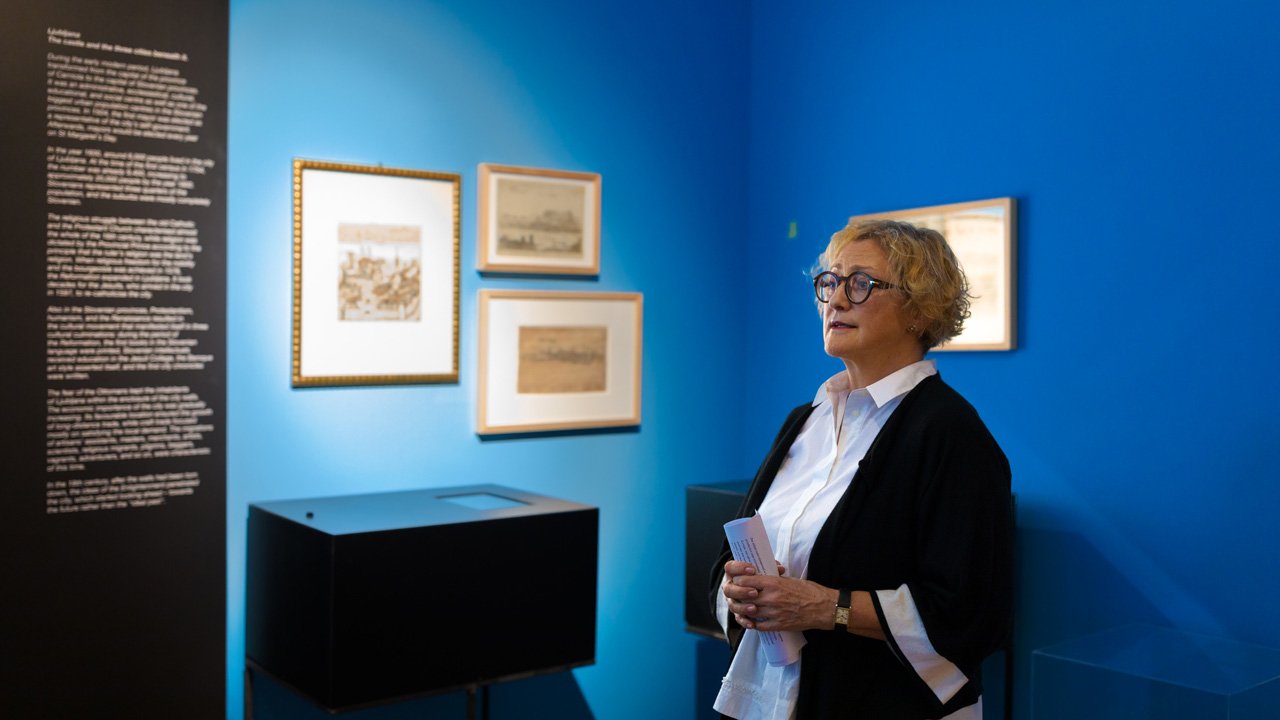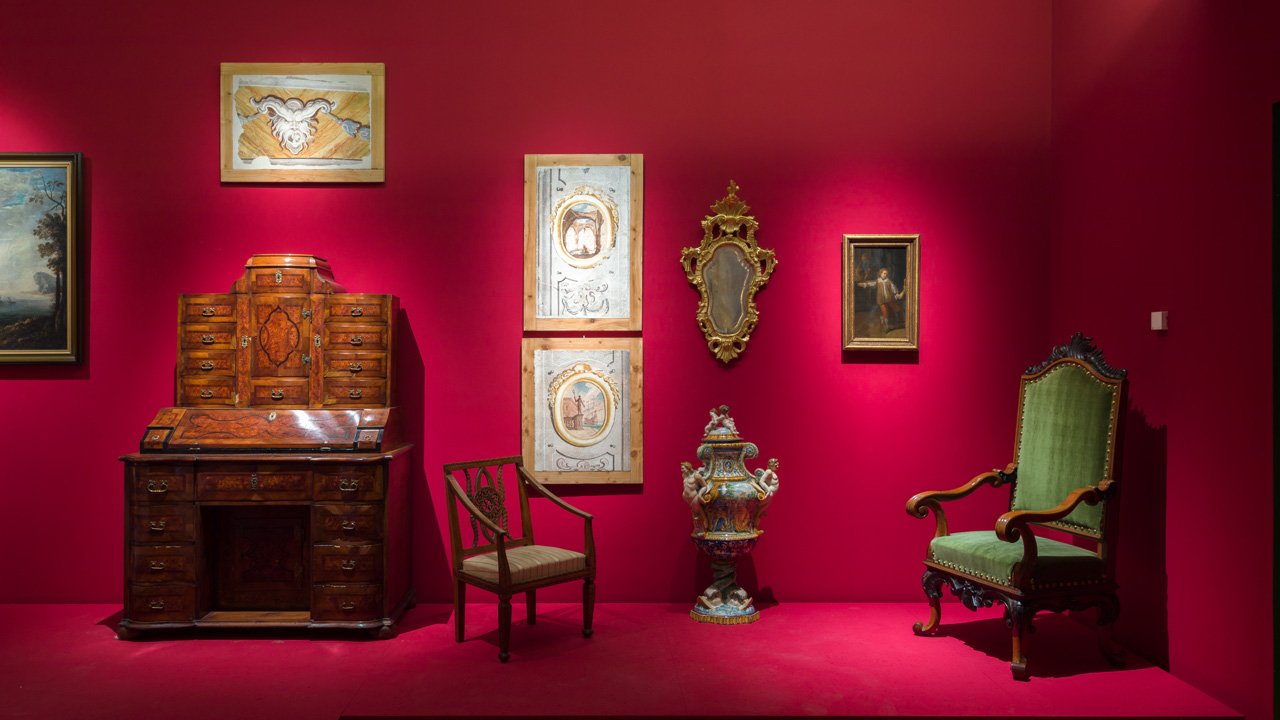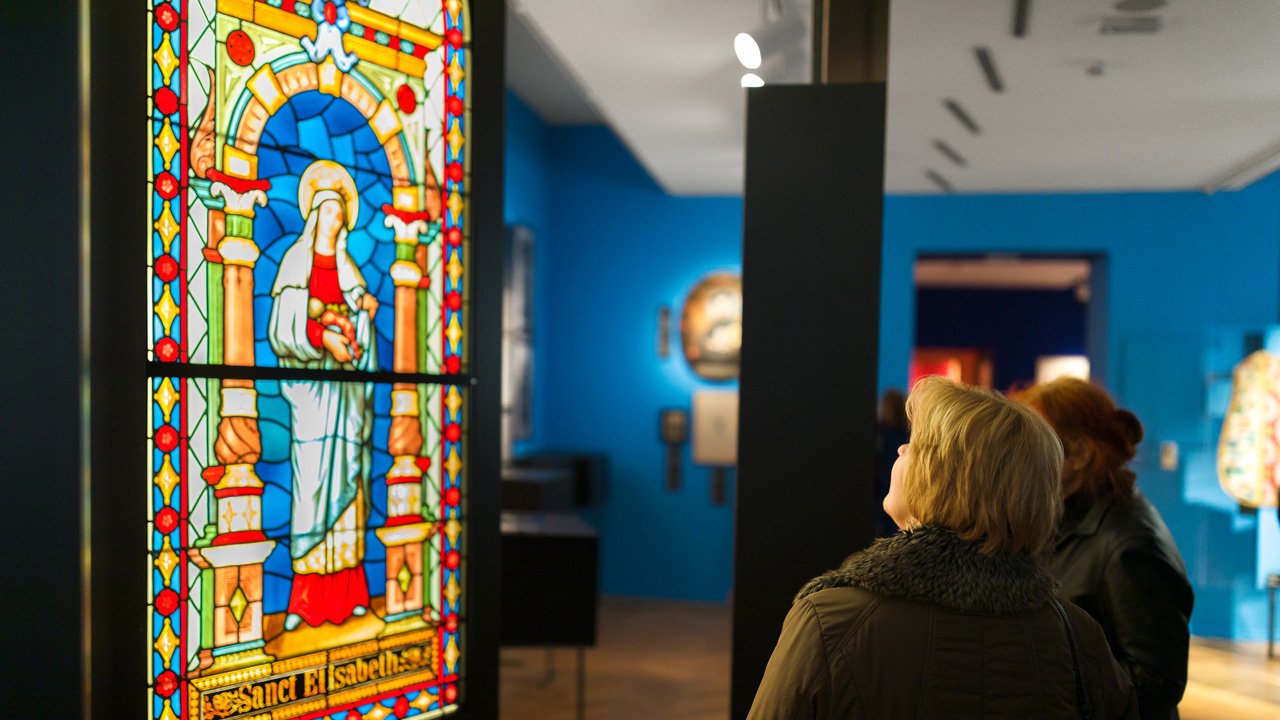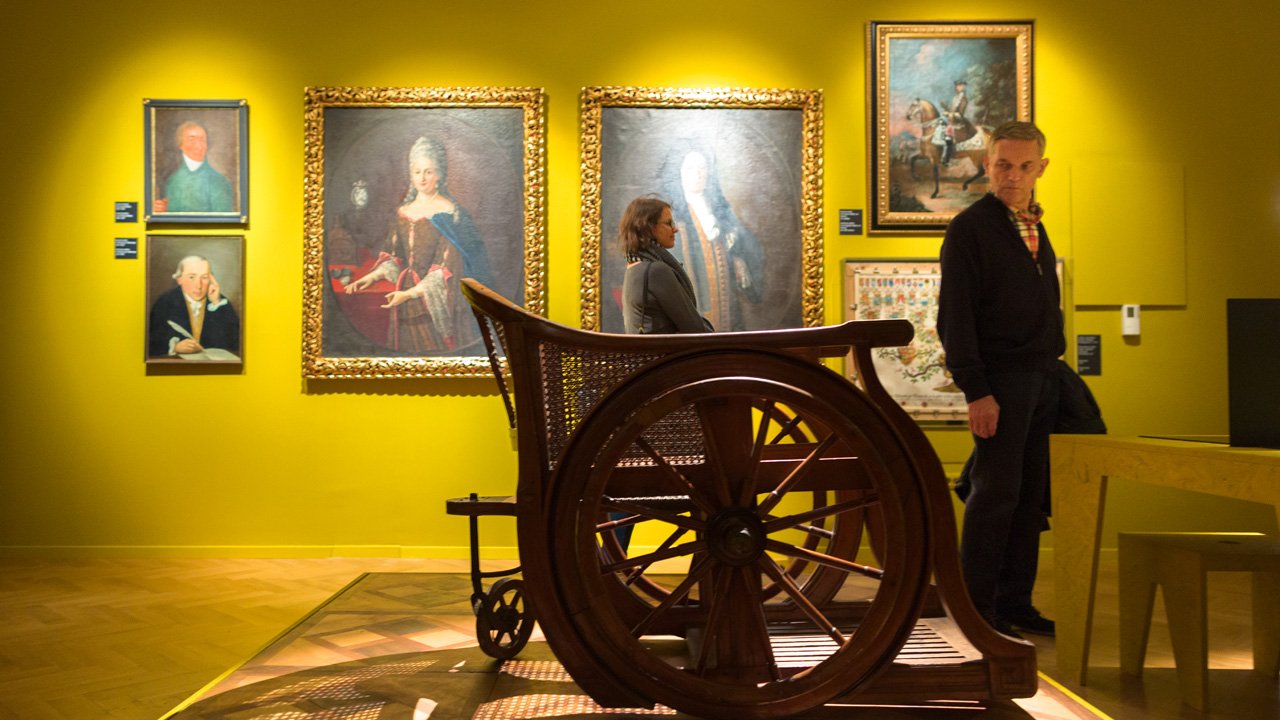
When did you first know that you wanted to be a curator?
When finishing my degree I got two offers: to become a teacher at a Ljubljana secondary school or a curator in a museum. I knew what to expect if I chose to become a teacher. I accepted the museum work, although I knew nothing of museums' business, only their “products” when visiting them. I wanted to understand museums behind the scene. A museum curator is my first and only job.What's your favourite part of the job?
I can compare museum work to being a forensic scientist: to make an inventory of an object every clue is important, literature, different sources we follow all the signs to discover as many facts about the object as possible – the story behind the object is as important as the artefact itself. For this exhibition, eg when reading professional literature, it suddenly crossed my mind, 'We have this in our collection!' It was the painting that gave it a name and content: Table of nations, a depiction of the representatives of the European nations with stereotypical, simplified descriptions of a German, Spaniard, Italian, Frenchman, Englishman, Swede, Pole, Hungarian, Russian, and a Turk/Greek. A great object of how 18th century described nations by their main characteristics.Why is history still important?
Is it a cliché to say that I understand the present better?
Your official title at the museum is the Curator for the New Century (Kustodiat za novi vek). What exactly does this mean?
It means that I take care, buy, research, exhibit museum objects of this period. I explore the history of Ljubljana during the period from 1500 to 1850.Why is Book. Knowledge. Reason. an important exhibition for our readers to visit?
The exhibition widens our permanent exhibition in this sector of time. I wanted to present the processes and events that advanced and fostered the cultural and spiritual development in Ljubljana since the end of the 15th century (when the knowledge of the world was expanding) until the end of the 18th century (when the social history of Europe and the world was changing) that brought the city its central role in Carniola: a comparative view of the Reformation and Counter-Reformation, the change of the historical role of men (a man-knight-soldier transformed into a man-intellectual-gentleman). In the cabinet of wanders we exhibit objects important for Ljubljana's history and enlightenment - how important was a thought at the end of the 17th century towards the future rather than the “ideal” past, etc. We are also exhibiting many museum objects from our collection for the first time: original books of the period, which we borrowed in National and University Library in Ljubljana, some artefacts from National Museum, National Gallery, National History Museum, Archdiocesan Archive in Ljubljana and various private collectors.What are three things visitors to the exhibition will be surprised to discover?
The colours, number of objects and designing concept.
What are some items in the museum's permanent collection that shouldn't be missed after visiting the Book. Knowledge. Reason. exhibition?
There are obviously quite a few. Just to mention a few, I would say a crucifix from 1520, the portrait of the Emperor Charles VI by Francesco Robba, a cradle, children's toys, a gold and enamelled bracelet of Anna Elisabeth baroness of Auersperg and a beggars badge from 1667.What are the main challenges in curating exhibitions in the age of smart phones, social media and short attention spans?
This is a million dollar question. In general, how to make people to come to the museums, how to reach their attention? I guess there are some changes, people are fed up with “virtual reality”, so museums can offer historical objects, which each of them can tell an interesting story.How can museums in general (and history museums in particular) be made more exciting for the general public?
At the moment we are seeing a revival of small and regional museums all over the world, different historical paths in Europe (but also the Silk Road!), etc have been organised. We are turning back to the objects, originals, which are our media. With an honest presentation we do attract visitors.





Comments